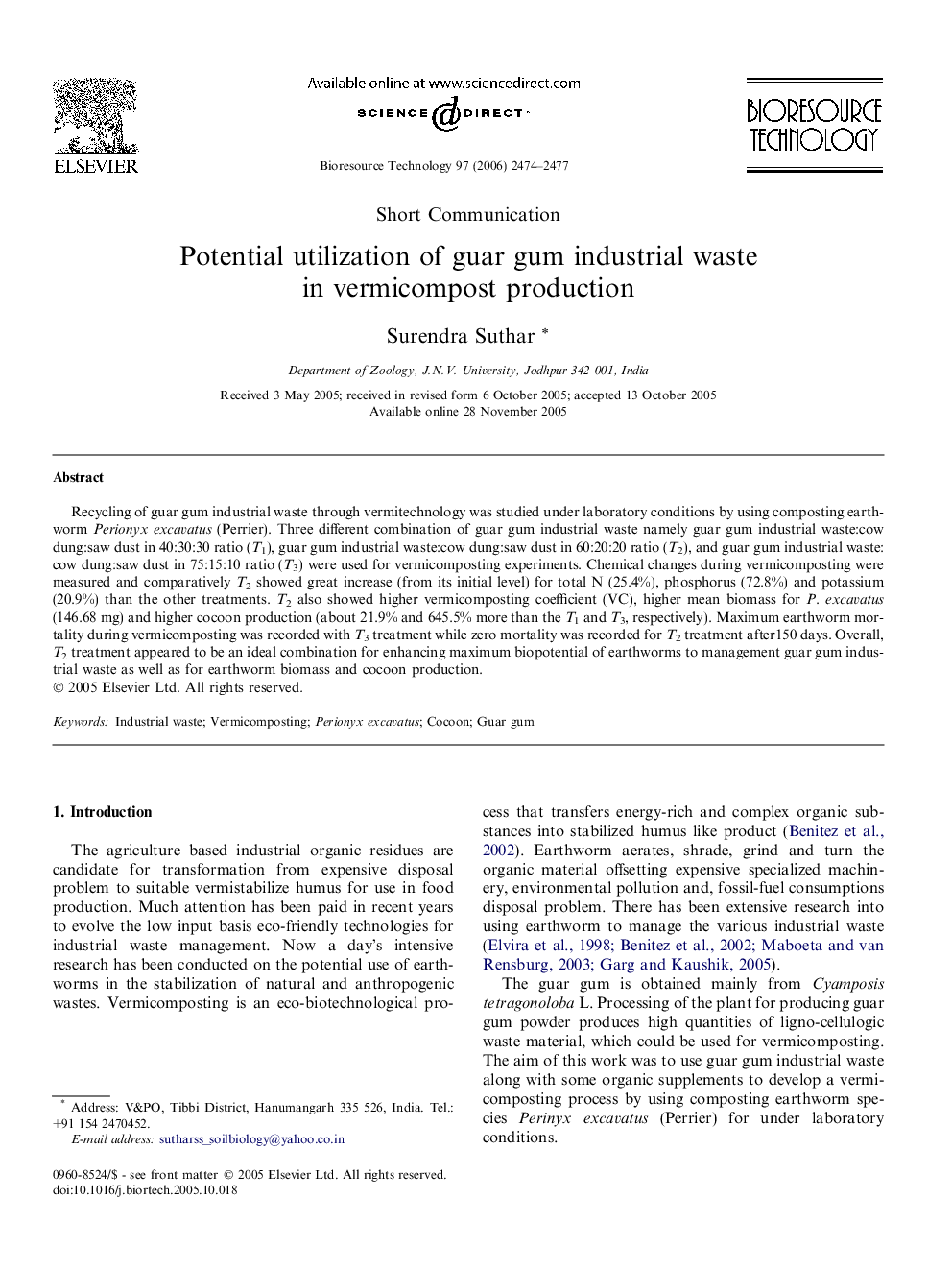| Article ID | Journal | Published Year | Pages | File Type |
|---|---|---|---|---|
| 685968 | Bioresource Technology | 2006 | 4 Pages |
Recycling of guar gum industrial waste through vermitechnology was studied under laboratory conditions by using composting earthworm Perionyx excavatus (Perrier). Three different combination of guar gum industrial waste namely guar gum industrial waste:cow dung:saw dust in 40:30:30 ratio (T1), guar gum industrial waste:cow dung:saw dust in 60:20:20 ratio (T2), and guar gum industrial waste:cow dung:saw dust in 75:15:10 ratio (T3) were used for vermicomposting experiments. Chemical changes during vermicomposting were measured and comparatively T2 showed great increase (from its initial level) for total N (25.4%), phosphorus (72.8%) and potassium (20.9%) than the other treatments. T2 also showed higher vermicomposting coefficient (VC), higher mean biomass for P. excavatus (146.68 mg) and higher cocoon production (about 21.9% and 645.5% more than the T1 and T3, respectively). Maximum earthworm mortality during vermicomposting was recorded with T3 treatment while zero mortality was recorded for T2 treatment after150 days. Overall, T2 treatment appeared to be an ideal combination for enhancing maximum biopotential of earthworms to management guar gum industrial waste as well as for earthworm biomass and cocoon production.
